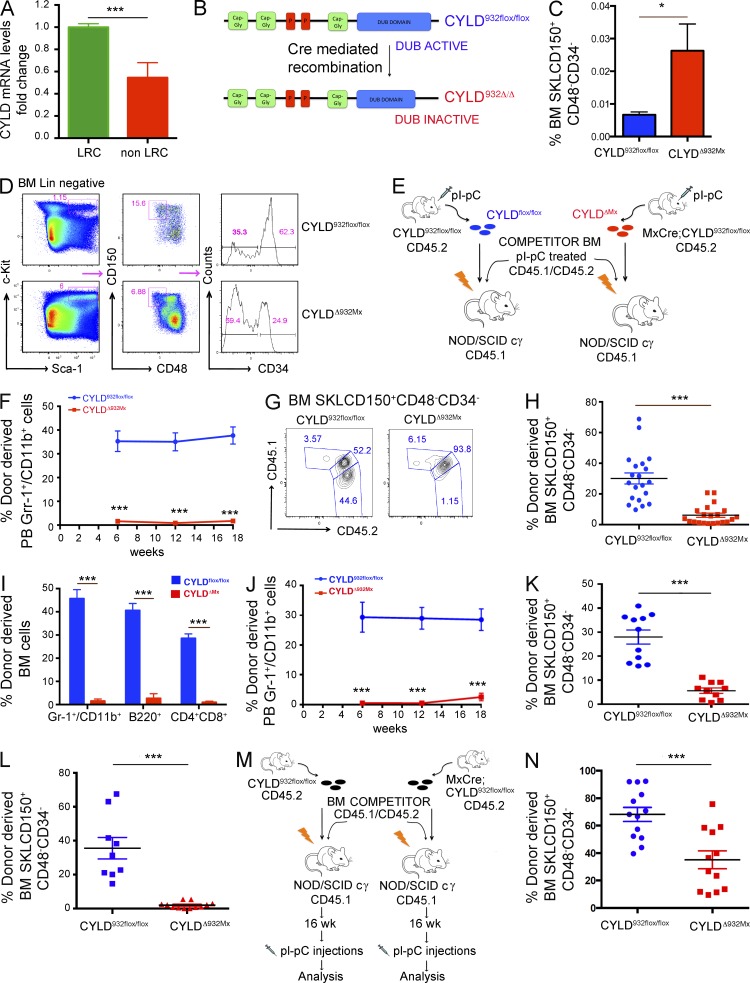Figure 1.
CYLD catalytic activity is required to preserve HSC activity. (A) Expression of CYLD in label-retaining dormant and non–label-retaining homeostatic HSCs. (B) Cre-mediated recombination of the CYLD932flox/flox allele generates a truncated and catalytically inactive protein. (C and D) Analysis of BM SKLCD150+CD48−CD34− in CYLD932flox/flox and CYLDΔ932Mx mice by flow cytometry. (E) Experimental scheme to generate and analyze competitive BM chimeras (i.v. injection) normalized to equal numbers of phenotypic HSCs shown in F–I. (F) Donor-derived myeloid chimerism in the peripheral blood of recipient mice. (G–I) BM of recipient mice (18 wk after transplant) analyzed for donor-derived HSCs (G and H) and myeloid, B, and T cells (I). (J and K) Peripheral blood myeloid (J) and BM HSC chimerism (K) of mice transplanted with an equivalent ratio of test/competitor total BM cells. (L) Similar analysis as shown in E, but transplantation was performed by intrafemoral injection. Donor-derived HSC chimerism in the BM of recipients is shown 18 wk after transplant. (M) Experimental scheme to generate competitive BM chimeras in which Cre-mediated recombination was induced by four pI-pC injections after stable engraftment (16 wk) has been achieved in the chimeras. (N) Analysis of donor-derived HSCs chimerism 18 wk after pI-pC induction. Results are shown of two (F–I: 20/21; J and K: 11/12; L: 9/12; N: 13/12) or three (A: 6/6; C and D: 14/7) independent experiments, with the numbers of analyzed control/mutant mice indicated in parentheses. Error bars indicate SEM. *, P < 0.05; ***, P < 0.001.

